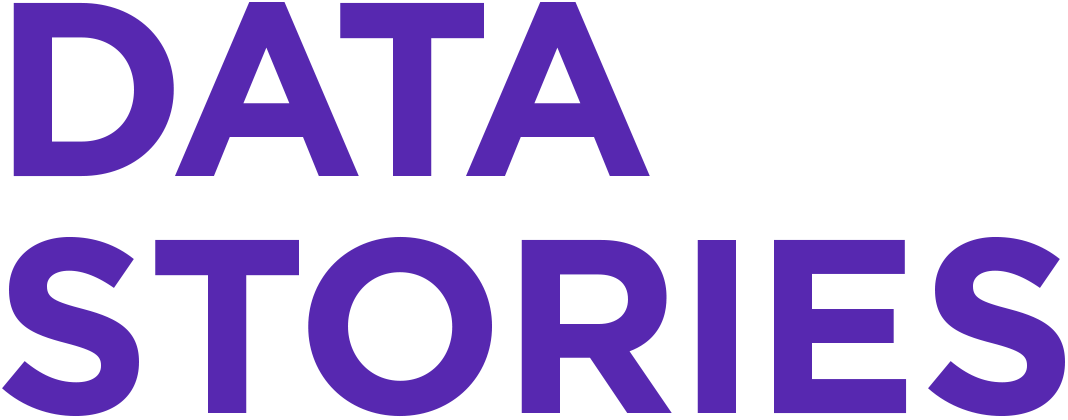Hey yo! We are back!
We have a very researchy kind of episode this time. Jessica Hullman is on the show to talk about her research on narrative visualization. Jessica is a Postdoctoral Fellow at Berkeley and soon to be Assistant Professor at University of Washington iSchool.
In the show we talk about lots of interesting basic visualization research issues like visualization literacy, bias and saliency, uncertainty, and some interesting automated annotation systems that Jessica has developed.
We also talk about Jessica’s background in experimental poetry!
Have fun.
—
Links
- School of poetic computation
- Rudolf Arnheim (Art and Visual Perception)
- Zacks and Tversky’s study on line charts and bar charts interpretation
- Jessica’s paper on the role of sequence in vis (potential for order effects):
- Jessica’s paper on Benefitting InfoVis with Visual Difficulties
- Stephen Few’s criticism of the paper
- Paper on “What makes a data visualization memorable?”
- Paper on how perceptually difficult stimuli help us think more analytically
- Paper on “Animation: Can It Facilitate?” (criticising the value of animation)
- Having to explain things to yourself is useful for learning (from graphs) (in general)
- Enrico’s paper on “The Persuasive Power of Visualization”
- Kahneman’s book “Thinking fast and slow”
- Paper on graphs making information more visually salient
- NYT graphics: FIFA worldcup draws (representing uncertainty)
- Economist’s Blog Graphic Detail
- Contextifier and NewsViews (Jessica’s systems for generating visualizations to go with news articles)
- Ellipsis and Lyra (Authoring systems for narrative visualizations from Arvind Satyanarayan and Jeff Heer)
- Tableau Story Points


I quite enjoyed this episode, and will have to listen again. I was particularly drawn to the discussion of the role of visualization in the formation of an opinion. As Enrico (?) pointed out, it should be obvious, but it is anything but.
I guess I’d have to question the strategy of making data & visualizations more engaging, or at least more interactive. I’m a data-head too, and love exploring data, but I can’t deny that puts me (us) in a minority. For the “common user”, what they actually respond to is simplicity and accessibility.
Kahneman’s book was mentioned. I’m ashamed to admit how long that has been on my Amazon wishlist and still not purchased, much less read. A few years ago I read Gary Klein’s book – Source of Power http://www.amazon.com/Sources-Power-People-Make-Decisions/dp/0262611465 which explores intuitive decision making in a high stakes context. I my own mind, I generalize his ideas by not focusing on the stakes, but rather the (perceived) cost of information. Klein’s case studies generally involve making life-or-death decisions within seconds – time itself is simply too valuable to “waste” on exhaustive data acquisition or analysis. He then concentrates on effective decision making in the face of what might be considered limited or unorganized information. Fascinating stuff.
When it comes to interpreting data, one would think you have the luxury of time, but let’s consider the common user. They may lack confidence in their ability to analyze the data, or may have reservations about the quality or completeness of the data. From their perspective, rigorous exploration and analysis is a very daunting proposition. In effect, the cost of this information could be measured in the risk of embarrassment or perhaps the loss of self esteem.
The trick then, would be to lower that perceived cost in such a way that it is accepted as a useful input for an intuitive decision. (I suspect one of Kahneman’s heuristics, as well, but I can’t speak to that).
Interesting comment Joel! We are faced with an important dilemma: should we make everything super simple so that everyone can get it or accept to experiment and explore a bit (at the risk of scaring some people off) and hope literacy will increase in the long run? My personal believe is that striving with eccessive fear of overwhelming people or scaring them off is a dangerous path. We have to give people the opportunity to learn. I think it is important to distinguish between visualizations that make things too hard because they go agains good principles of perception from those that are hard “just” because they are unfamiliar. Unfamiliarity is not necessarily a bad thing and the trick is to understand where to draw the line. Take care.
I think the use cases are mutually exclusive. Persuasion implies attempting to communicate analysis in hopes of influencing a decision or at least an opinion. Encouraging significant exploration or analysis is antithetical to that – your audience may confound you by rejecting your conclusions and formulating their own.
No having stated that the two are mutually exclusive, I’ll prove my credentials as a logician by suggesting that decision making tries to do both at once. People are like that.